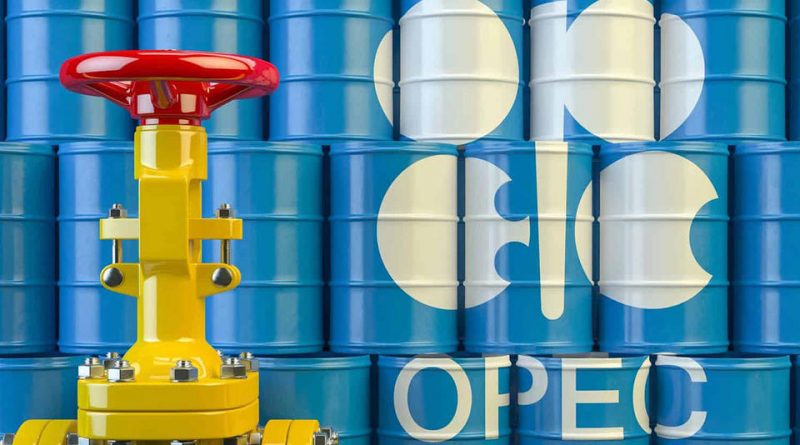OPEC’s Ode to Oil Prices
Unprecedented oil production cuts by OPEC and allies could see much-needed price stabilisation amidst the COVID-19 crisis
Key Actors
- United States of America – led by President Donald Trump; world’s largest oil consumer and largest oil producer
- OPEC (Organisation of the Petroleum Exporting Countries) – organisation of 13 countries to coordinate oil production and export policies
- Major player: Saudi Arabia – led by Crown Prince Mohammed bin Salman; second-largest world oil producer
- OPEC+ – OPEC and 10 additional nations which also coordinates oil policy
- Major player: Russian Federation – led by President Vladimir Putin; third-largest world oil producer
Statistics
- Oil production is set to drop by nearly 10 million barrels a day, a projected 12% decrease from 83.35 million barrels a day in December 2019
In an emergency online conference on April 12th, OPEC+ members made the largest oil production cuts in history amidst the global COVID-19 pandemic. In March, when COVID-19 was thought to be merely a temporary inconvenience, producers failed to come to an agreement on how much to limit prices. A bitter price war between Saudi Arabia and Russia ensued, which saw crude oil prices tank from over 50 USD per barrel at the start of March to just over 20 USD per barrel two weeks later. With a production-cutting agreement, oil prices could begin to tick upwards once again, but real recovery should not be expected until the pandemic is over.
History
The formation of the OPEC+ alliance in 2016 was intended to bring together two oil rivals: Russia and Saudi Arabia. Though the pair implemented several successful production cuts in the following years, the alliance broke apart in March when Russia refused to agree to further Saudi-proposed cuts in the wake of the COVID-19 pandemic. Russian strategists feared that cutting production would lead to a spike in oil prices, which, though beneficial to Russia and Saudi Arabia, would be even more advantageous for American firms. An increase in the price of oil would allow American shale producers (shale oil is a type of offshore oil which is expensive to extract) to enter the market and gain valuable market share and expand their operations.
Why did oil prices tank?
After the failure to reach an agreement, both Saudi Arabia and Russia entered a price war, where both sides raised production and lowered prices in an attempt to make it unprofitable for the other party to produce. This move came as China, the world’s second-largest oil consumer, suffered greatly from lockdowns in several areas of the country which drastically reduced its oil consumption. This combination of increased supply and decreased demand caused oil prices to tank.
Why was an agreement reached?
After it became clear that COVID-19 was not an isolated, temporary setback, policymakers in both countries saw that neither economy could sustain low oil prices in the long-term. Demand for oil continued to tank as more countries implemented policies to combat COVID-19 which were economically detrimental.
Furthermore, OPEC+ saw mounting pressure from the U.S. due to job losses from low oil prices—U.S. firms were simply unable to compete at such low prices and resorted to laying off workers. In a series of tweets, U.S. President Donald Trump urged Russian and Saudi Arabian leaders to make cuts to their production to bring oil prices—and U.S. oil sector jobs—back to pre-COVID levels. His wishes were realised when a meeting between the rival factions was called for April 9th to bring an end to the price war.
What was the agreement?
In short, all OPEC+ (and OPEC) nations have agreed to cut production by nearly 10 million barrels a day between the months of May to June. Production would gradually resume in the following months and return to pre-COVID levels in 2022. The deal, however, was nearly scrapped when Mexico, an OPEC+ member, balked at its assigned cuts. After another emergency webinar on April 12th, Mexico conceded to reduced cuts and final agreement was reached.
Will it work?
Given the current state of the world economy, 10 million barrels a day may not be enough, especially with cuts only going into effect on May 1st. Demand for oil in April could drop by 20 million barrels a day, and more could follow if the pandemic is not resolved quickly. Furthermore, producers, especially Russia, Saudi Arabia, and Nigeria, are well-known for their loose interpretations of production cuts which could undermine the goals of the deal. Finally, the U.S., the world’s largest producer, was not party to the deal and its producers could ramp up production if prices increase, nullifying the deal’s effectiveness. In short, a renewed price war could be just around the corner.
Bibliography
“A Historic OPEC+ Deal to Curb Oil Output Faces Many Obstacles.” The Economist. The Economist, https://www.economist.com/finance-and-economics/2020/04/13/a-historic-opec-deal-to-curb-oil-output-faces-many-obstacles. Accessed 14 Apr. 2020.
Business, John Defterios and Hanna Ziady, CNN. “Oil Prices March Higher as OPEC Calls for Emergency Meeting on Monday.” CNN, https://www.cnn.com/2020/04/03/business/oil-prices-opec-meeting/index.html. Accessed 14 Apr. 2020.
Business, John Defterios, CNN. “Why Oil Prices Are Crashing and What It Means.” CNN, https://www.cnn.com/2020/03/09/business/oil-price-crash-explainer/index.html. Accessed 14 Apr. 2020.
Business, Matt Egan, CNN. “Oil Prices Spike by a Record 25% as Trump Talks up Huge Production Cuts and Saudi Arabia Calls for OPEC Meeting.” CNN, https://www.cnn.com/2020/04/02/business/oil-prices-trump-russia-saudi-arabia/index.html. Accessed 14 Apr. 2020.
Meredith, Sam. “OPEC and Allies to Decide on Historic Oil Production Cut as Coronavirus Ravages Demand.” CNBC, 9 Apr. 2020, https://www.cnbc.com/2020/04/09/oil-and-coronavirus-opec-meeting-to-decide-on-historic-output-cuts.html.
OPEC : The 9th (Extraordinary) OPEC and Non-OPEC Ministerial Meeting Concludes. https://www.opec.org/opec_web/en/press_room/5882.htm. Accessed 14 Apr. 2020.
Stevens, Pippa. “OPEC and Allies Finalize Record Oil Production Cut after Days of Discussion.” CNBC, 12 Apr. 2020, https://www.cnbc.com/2020/04/12/opec-and-allies-finalize-record-oil-production-cut-after-days-of-discussion.html.
World Crude Oil Production. https://ycharts.com/indicators/world_crude_oil_production. Accessed 14 Apr. 2020.

